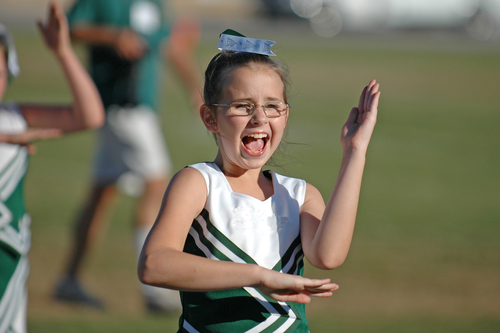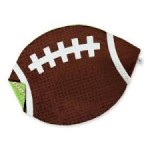AAP Updates Their Policy On Cheerleading
 Over the last several decades, cheerleading has evolved from esthetically pleasing, enthusiastic girls shaking pom poms to a full on co-ed seriously rigorous and sometimes highly competitive event. In fact, kids as young as 3 years old are starting their cheerleading careers. What once may have been overlooked as a somewhat frivolous side dish to the sport entrée, is now a serious, physically demanding and exciting sport to watch. But wait – it has yet to be classified as a true sport by the powers that be (namely, the National Federation of State Highschool Associations and the National Collegiate Athletic Association). This may be one of the factors why cheerleading has evolved and continues to do so under the radar of any watchful regulating eyes. Injury rates for cheerleaders have increased by a whopping 400% since 1980.
Over the last several decades, cheerleading has evolved from esthetically pleasing, enthusiastic girls shaking pom poms to a full on co-ed seriously rigorous and sometimes highly competitive event. In fact, kids as young as 3 years old are starting their cheerleading careers. What once may have been overlooked as a somewhat frivolous side dish to the sport entrée, is now a serious, physically demanding and exciting sport to watch. But wait – it has yet to be classified as a true sport by the powers that be (namely, the National Federation of State Highschool Associations and the National Collegiate Athletic Association). This may be one of the factors why cheerleading has evolved and continues to do so under the radar of any watchful regulating eyes. Injury rates for cheerleaders have increased by a whopping 400% since 1980.
As cheerleading has become more intense, so have the associated injuries such as sprains, strains, dislocations, breaks, cuts, contusions, concussions and even some more serious like paralysis. In light of all of this, the American Academy of Pediatrics (AAP) recently published their policy on cheerleading describing the main causes and types of injuries to cheerleaders of various age groups. Based on this information the AAP has come up with these recommendations:
- Designate Cheerleading as a SPORT, which will require Cheerleading to follow rules and regulations and be monitored by regulating bodies. Similarly, being classified as a sport, will allow teams to have better training facilities, access to athletic trainers and doctors, and highly certified and qualified coaches.
- Participants would have to pass required physical fitness exams prior to participating and have access and certified instruction for strength training.
- Coaches would have to be highly qualified AND certified especially for spotting, stunts, safety and injury prevention. Coaches MUST adhere to the latest version of rules and safety guidelines for the technical and stunt components of cheerleading.
- Participants themselves must be properly and adequately trained for the specific positions on the cheerleading team including spotting and safety.
- The type of surface and space the cheerleading events take place on are highly regulated (i.e. no concrete or asphalt).
- The types of stunts (such as pyramids and tosses) are highly regulated as far as heights, position of participants and spotting.
- Emergency protocols should be written with coaches and team/school doctors and athletic trainers and be available to all involved in cheerleading including participants and their parents.
- Better monitoring of cheerleading injuries is required to further advance and improve upon injury awareness and prevention.



















